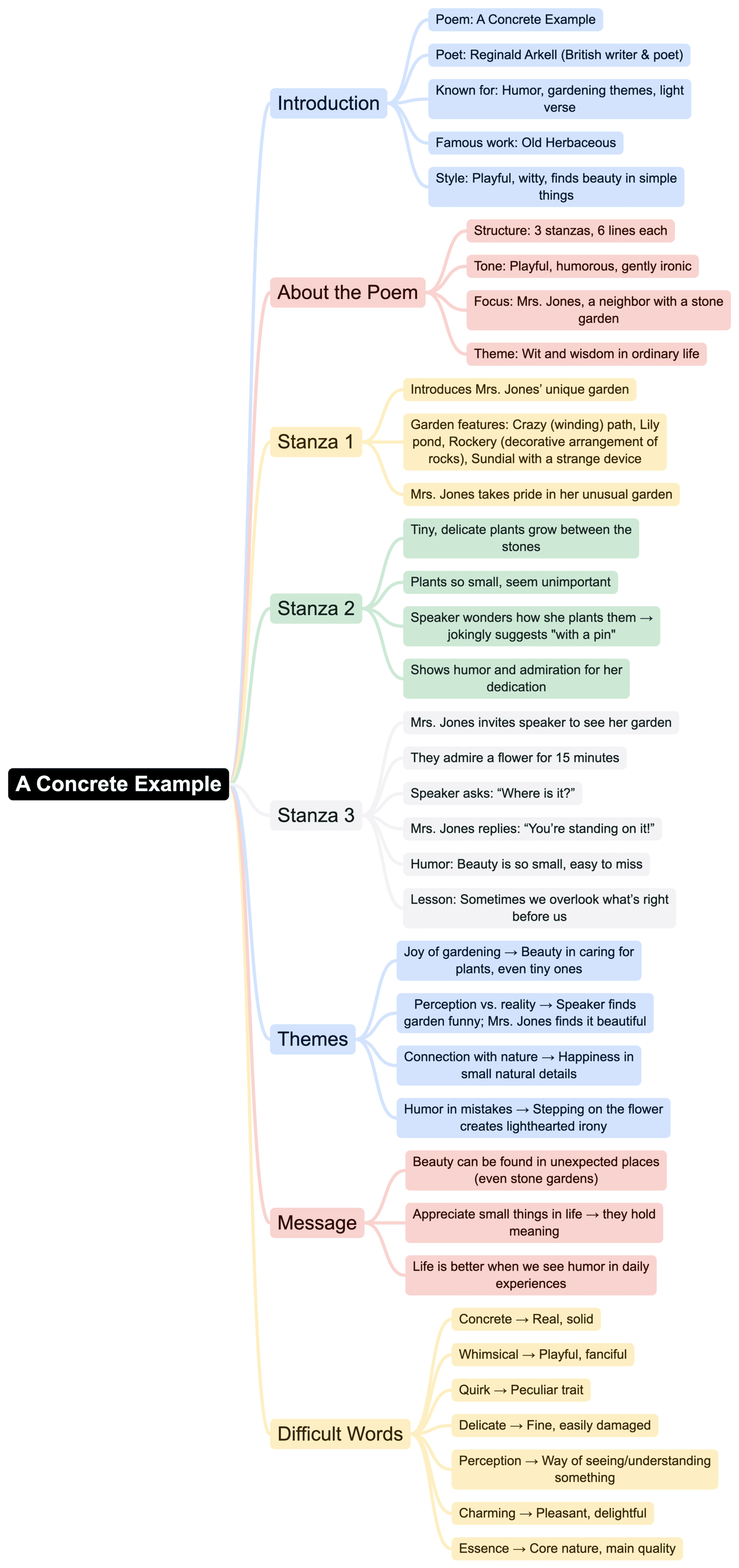Class 8 Exam > Class 8 Notes > English Poorvi Class 8 - New NCERT > Mind Map: A Concrete Example
Mind Map: A Concrete Example | English Poorvi Class 8 - New NCERT PDF Download

The document Mind Map: A Concrete Example | English Poorvi Class 8 - New NCERT is a part of the Class 8 Course English Poorvi Class 8 - New NCERT.
All you need of Class 8 at this link: Class 8
|
60 videos|520 docs|57 tests
|
FAQs on Mind Map: A Concrete Example - English Poorvi Class 8 - New NCERT
| 1. What is a mind map and how is it useful for studying? |  |
Ans. A mind map is a visual representation of information that organizes ideas around a central concept. It is useful for studying as it helps in breaking down complex topics into simpler parts, enhancing memory retention, and providing a clear overview of the material. By connecting related ideas, students can better understand relationships and hierarchies in the subject matter.
| 2. How can I create an effective mind map for my exam preparation? |  |
Ans. To create an effective mind map, start by placing the main topic at the center of the page. Use branches to represent subtopics and add keywords or images related to each branch. Keep the layout clear and colorful to stimulate visual memory. Additionally, use simple words and phrases to maintain clarity, and review the mind map regularly to reinforce learning.
| 3. Are there specific techniques to enhance my mind mapping skills? |  |
Ans. Yes, several techniques can enhance mind mapping skills. Use colors and symbols to differentiate between ideas and make the map visually appealing. Incorporate images and drawings to represent concepts, as visuals can improve recall. Practice regularly by mapping out different subjects and experimenting with different layouts until you find a style that works best for you.
| 4. Can mind maps help in subjects other than science? |  |
Ans. Absolutely! Mind maps can be beneficial in any subject, including literature, history, and mathematics. They can help organize themes in literature, timelines in history, or formulas in mathematics. The flexibility of mind mapping allows students to approach diverse topics creatively and effectively, making it a versatile study tool.
| 5. How can I use mind maps for group study sessions? |  |
Ans. To use mind maps in group study sessions, start by collaborating on a central topic and let each member contribute ideas as branches. Use a large paper or digital tool to create a shared mind map that includes everyone’s input. This collaborative approach not only enhances understanding through discussion but also allows for diverse perspectives, making the study session more productive.
Related Searches
















